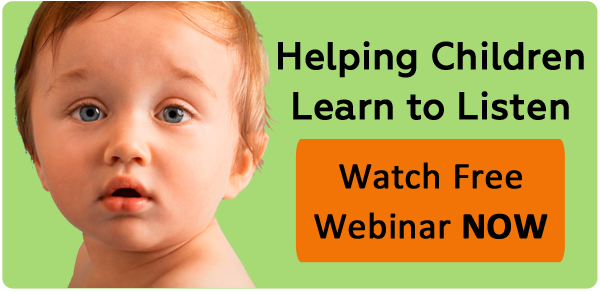
The dot on my hand darkened to black, deep black.
Wearing a plastic mood dot was part of my stress management class. If all went well, the dot shone blue. If not, it turned shades of bluish-black, to midnight.
In my preschool class, over the course of a couple of weeks, I noticed that certain events and activities turned my dot black, events that most moms and dads face every day.
Transition times.
Transition times headed up my list of stressful moments. Moving from one activity to another, such as work time to lunchtime, lunch to recess, recess back to class and dismissals. Most parents report that going from one event to another, for example, getting dressed then on to breakfast, breakfast to school, school to home, bath to bed, reign as the times of day that their “black dot” appears.
Another black dot instant coincided with those unpredictable moments that we have with children where everything can be calm and peaceful, then change to chaos, for no apparent reason, in a blink of an eye.
Determined to figure out how to create blue dot moments, I kept a daily log. When I was actively involved giving lessons, reading a book out loud, or singing, the mood dot was blue skies. During interruptions, phone calls, and transition times storm clouds brewed across my dot, and I felt my impatience and grumpiness emerge.
Deciding to follow the advice of the old song, I determined to “accentuate the positive, eliminate the negative” and use my blue-sky activities to full advantage, and try to eliminate that stormy weather.
Interruptions and phone calls I minimized by setting limits. For transition times, I ventured to find a song or two for each changeover of activity. As we sang while changing activities, I noted that my mood dot stayed blue, and could change from black to blue in less than thirty-seconds.
In moments of chaotic classroom meltdown, when it would have been easier to yell, “Please be quiet,” I sang.
Serendipitously, I found that when I sang in another language, the group quieted in seconds. I busied myself learning several songs in Spanish and German. My one Chinese song, though, consistently calms any preschool group. How? Developing language in preschoolers creates a fascination for new words, and they will stop to listen to something unfamiliar.
For transition times, I used songs such as Mary Wore Her Red Dress and Willabee Wallaby Wee to dismiss children one by one to a new activity. There were songs for clean up time (One, two, three, four, five, six, seven, eight, nine, let’s finish up, it’s clean up time). For lunch, we sang, “This is the way we get ready for lunch”.
These songs helped create a routine, along with relieving my stress, and the children’s tension. Newcomers to the classroom adapted quickly with musical cues to aid in their assimilation. Expectations become clear with our musical routine.
Here’s wishing you blue-sky dots and days. Remember, when things start to get you down, sing.
BONUS:
Here’s a handout and audio recording of transition songs:


Please tell us what your Chinese song is.
Thanks.
Cathy,
My Chinese song is called Pan Yoo. A classmate from Taiwan taught it to us. I’m looking for a recording of it that I did. If I find it, I’ll post it.
Pan Yoo
Taiwanese Song
Pan yoo, woh yung yune chu fu ni
Pan yoo, woh yung yune chu fu ni
Chu fu ni gen khan
Chu fu ni quai leh
Pan yoo, woh yung yune chu fu ni
Friends forever we’ll be friends
Friends forever we’ll be friends
I’ll be your friend
You’ll be my friend
Friends forever we’ll be friends
Listen to it here.
Beautiful song sweetly sung. I know songs work like magic. In my last school for nine years I used to sing, “Where are where are all the children?” …(2) Come along everyone …(2) Come along right now – whenever I needed to gather the 6 yr olds together. Great reminder to use this tool.
Suseela,
Great to know that singing works for you, too!
Thank you for this reminder and song list. I would love more a list of some more of your favorite songs. Suggested preferred cds.
Bami,
Here is a list of songs and the lyrics for my favorite transition songs. Click on the link below:
Transition Songs
Here is an mp3 of the songs:
http://marenschmidt.com/wp-content/uploads/2015/10/Kids-Talk-Transition-Songs-Maren-Schmidt.mp3
Beautiful! A Brilliant idea that hits the nail right on the head!
Thank you! This is such great advice!
I have noticed my son’s teacher at his Montessori school employing this technique to calm him. I followed her example a few days at home when my boys were stressed for various reasons and we were all approaching the blessed meltdown moment.
Now I will proactively use this in transition moments!
I often just make up new lyrics to nursery melodies. They don’t rhyme necessarily, but they communicate: “We are going to get dressed…and then we will play.” I think the melody slows down our speech and makes it less stressful for them to process instructions/requests, as well as slowing down my breathing and heart rate.
Love this post! Thank you!
I love the Chinese song…thanks so much for the sweet rendition…will pass it on to teachers at Discovery School!
Norma,
Glad you enjoyed it! Recorded in my living room here in Hawaii.
Could you tell us where to get the mood dot?
Rose,
Search online for “mood dot” or “bio dot” and some vendors will show up.
The dots are also called “stress circles”.
Thanks for the song lyrics. Would you have the music notes to them as well? I would also love to get the Pan Yoo (chinese pinyin would be peng you) song in Chinese characters. I searched online and got a completely different song.
Yuen,
I learned this song in 1989 from a Taiwanese classmate. I memorized the pronunciation and tune from a tape recording we did and she wrote down the approximate phonetic pronunciation.
We’ll see what comes next!
Hi Maren,
Here is the Taiwanese Song – Blessing You 祝福你 zhùfú nǐ
The meaning is as below:
Friends! I will always bless you and wish you health and wish you happiness.
朋友! 我永遠祝福你 祝福你健康 祝福你快樂
Péngyǒu! Wǒ yǒngyuǎn zhùfú nǐ zhùfú nǐ jiànkāng zhùfú nǐ kuàilè.
11321 (low6)11 55 (high1) 65355 55(high1) 6533 532 11 321 (low6) 11
https://www.youtube.com/watch?v=X51tiJkde4c
I am a Montessori 3-6 teacher in Australia (Taiwanese)
Ying Ying,
Thank you so much for this.